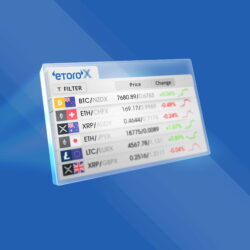Key Takeaways:
- DTF transfers are revolutionizing the printing industry by producing high-quality prints on various surfaces.
- Advantages of using DTF transfers include improved color accuracy, sharper details, faster production times, and versatility in substrate options.
- Common misconceptions about DTF transfers include complexity, limited material options, and higher costs.
- Choosing the right equipment involves considering factors like print resolution, size, compatibility, reliability, and durability.
- Different DTF transfer methods include all-in-one solutions, using a separate heat press, or hybrid printers.
- Essential tools and accessories for successful DTF transfers include DTF film, pretreatment solution, coating machine, cutting plotter, and heat press.
- The step-by-step guide involves preparing artwork, setting up the DTF printer, and following best practices for successful transfers.
- Troubleshooting common issues in DTF transfers includes addressing ink smudging and bleeding, adhesion problems, and color inconsistencies.
1. Understanding the Importance of DTF Transfers
In the world of printing, DTF transfers (Direct to Film transfers) have emerged as a game-changer. With their ability to produce high-quality prints on a variety of surfaces, DTF transfers are revolutionizing the printing industry. In this section, we will explore why DTF transfers are considered the future of printing, the advantages they offer to printing businesses, and debunk common misconceptions surrounding this innovative technology.
Why DTF Transfers are the Future of Printing
DTF transfers have gained popularity due to their ability to create vibrant and durable prints on a wide range of materials, including fabrics, ceramics, plastics, and more. Unlike traditional heat transfers, DTF transfers eliminate the need for transfer papers, as the ink is directly printed onto a film that is then transferred onto the desired surface.
This new technology offers improved color accuracy, sharper details, and better adhesion compared to other transfer methods. Additionally, DTF transfers boast faster production times, making them highly efficient for commercial printing.
As consumer demand for personalized and customized products continues to grow, DTF transfers provide printing businesses with the flexibility to meet these demands. With DTF transfers, complex designs, gradients, and small text are easily reproduced, allowing print providers to expand their offerings and cater to a wider range of customers.
The Advantages of Using DTF Transfers in Your Printing Business
Integrating DTF transfers into your printing business can bring numerous benefits. Firstly, DTF transfers offer excellent color vibrancy and accuracy, ensuring that your prints capture the attention of your customers. The ability to achieve intricate details and gradients helps to set your business apart from the competition and creates a memorable impression.
Moreover, DTF transfers provide exceptional durability. The ink penetrates the fabric or surface, creating a bond that can withstand repeated washings and heavy wear. This durability is particularly valuable for printing on fabrics, where resistance to fading and cracking is crucial for customer satisfaction.
Another advantage of DTF transfers is the versatility they offer in terms of substrate options. Whether you’re printing on cotton, polyester, nylon, or even hard surfaces like ceramics and plastics, DTF transfers can deliver high-quality results. This versatility allows printing businesses to diversify their product offerings and tap into various markets.
Common Misconceptions About DTF Transfers
While DTF transfers offer a range of advantages, there are still some misconceptions surrounding this printing technology. One common misconception is that DTF transfers are complicated and require extensive technical knowledge to operate. In reality, with the right equipment and proper training, DTF transfers can be easily implemented into your printing workflow.
Another misconception is that DTF transfers are limited to certain types of fabric or surfaces. While it’s true that some materials may require specific pretreatment processes, advancements in DTF technology have made it possible to achieve excellent results on a wide range of substrates.
Lastly, some people believe that DTF transfers are more expensive than other printing methods. While the initial investment in equipment might be higher, the cost per print is often lower compared to traditional transfer methods. Additionally, the efficiency and versatility of DTF transfers can lead to higher profit margins for printing businesses.
2. Choosing the Right Equipment for DTF Transfers
To achieve DTF transfers ready to press, it is essential to select the right equipment. In this section, we will discuss the key factors to consider when choosing a DTF printer, explore different DTF transfer methods, and highlight the essential tools and accessories necessary for successful DTF transfers.
Key Factors to Consider When Selecting a DTF Printer
When choosing a DTF printer, several factors should be taken into account to ensure optimal performance. One essential factor is the print resolution. Higher resolution printers produce sharper and more detailed prints, resulting in a higher quality output. It is recommended to choose a printer with a resolution of at least 1440 dpi for crisp and precise designs.
The size of the printer is another crucial consideration. The size should align with your printing needs, ensuring you can accommodate larger prints if required. Additionally, the printer should be compatible with various ink types to offer flexibility in color options and material compatibility.
Reliability and durability are also important factors to consider. It is advisable to choose a printer from a reputable manufacturer known for producing reliable and long-lasting equipment. This ensures minimal downtime and maximizes productivity.
Exploring Different DTF Transfer Methods
While DTF transfers involve printing onto a film and then transferring it to the desired surface, there are different approaches to achieve this process. One method is the use of a DTF printer with a built-in heating element. This all-in-one solution eliminates the need for additional heat presses or ovens, simplifying the workflow.
Another option is a DTF printer that requires a separate heat press for the transfer process. This method offers flexibility, allowing for the use of different transfer films and heat press settings depending on the specific requirements of the job. It is important to choose a heat press that provides consistent heat and pressure for reliable transfers.
Additionally, there are hybrid printers available that combine DTF transfer capabilities with other printing technologies, such as direct-to-garment (DTG) printing or sublimation. These hybrid printers offer the advantages of multiple printing methods, allowing for greater versatility and expanded product offerings.
The Essential Tools and Accessories for Successful DTF Transfers
Alongside a DTF printer, there are essential tools and accessories that ensure successful DTF transfers. One crucial accessory is the DTF film, which acts as the transfer medium between the printed design and the final substrate. It is important to choose a high-quality DTF film that offers excellent ink absorption and release properties.
Another essential tool is the pretreatment solution, which prepares the surface of the substrate to ensure proper adhesion of the DTF film and ink. The pretreatment solution varies depending on the material being printed on, so it is vital to select the appropriate solution for the specific substrate.
Other accessories that aid in the transfer process include a coating machine or sprayer for applying the pretreatment solution efficiently, a cutting plotter for precise cutting of the DTF film, and a heat press for transferring the design from the film to the substrate. These tools and accessories contribute to the overall efficiency and quality of the DTF transfer process.
3. Step-by-Step Guide to DTF Transfer Process
To achieve press-ready results with DTF transfers, it is important to follow a systematic process. In this section, we will provide a step-by-step guide to the DTF transfer process, including preparing artwork, setting up the DTF printer, and best practices for successful transfers.
Preparing Artwork for DTF Transfers
The process of preparing artwork for DTF transfers starts with creating or selecting a design to be printed. It is essential to use high-resolution images or vector graphics to ensure sharp and detailed prints. The design should be sized correctly to fit the intended substrate, taking into account any bleed or margin requirements.
Once the design is ready, it is then printed onto the DTF film using the DTF printer. The color profile should be properly calibrated to ensure accurate color reproduction. The printer settings, such as ink density and print speed, should also be optimized for the specific design and substrate.
Walkthrough: Setting Up Your DTF Printer
Setting up your DTF printer involves several steps to ensure proper functioning and optimal print quality. Firstly, it is important to install the appropriate print drivers and software provided by the manufacturer. This software allows you to control the printer settings and manage print jobs.
Next, you should calibrate the printer, ensuring that the print head alignment is accurate. This step helps to prevent any misalignment issues that could result in skewed or distorted prints.
The temperature and humidity levels of the printing environment should also be considered. Extreme temperatures or humidity can affect the print quality and adhesion of the DTF transfer. Ideally, the printing environment should be controlled to maintain stable conditions.
Best Practices for Successful DTF Transfers
To achieve successful DTF transfers, it is important to follow best practices throughout the process. One crucial aspect is proper pretreatment of the substrate. The pretreatment solution should be applied evenly and allowed to dry before proceeding with the transfer. This step ensures optimal ink adhesion and prevents any issues with color inconsistencies or adhesion.
When transferring the design from the DTF film to the substrate using a heat press, it is important to follow the recommended time, temperature, and pressure settings. These settings may vary depending on the specific transfer film and substrate being used, so it is essential to refer to the manufacturer’s guidelines.
Finally, post-processing steps such as curing or fixing the print should be performed to ensure durability and wash-fastness. This step typically involves applying heat or using a curing oven to set the ink and enhance its resistance to fading and washing.
4. Troubleshooting Common Issues in DTF Transfers
Despite following the best practices, issues can occasionally arise during the DTF transfer process. In this section, we will address common problems that may occur, such as ink smudging and bleeding, adhesion problems, and color inconsistencies, and provide solutions to troubleshoot these issues.
Dealing with Ink Smudging and Bleeding
Ink smudging and bleeding can occur when the ink does not properly adhere to the substrate or has excessive saturation. To prevent smudging and bleeding, ensure that the pretreatment process is carried out correctly, allowing for optimal ink absorption and adhesion. Additionally, adjusting the printer settings, such as reducing the ink density or slowing down the print speed, can help control ink saturation and minimize the risk of smudging and bleeding.
Resolving Adhesion Problems with DTF Transfers
Poor adhesion can make the print susceptible to flaking or peeling. To improve adhesion, ensure that the substrate is properly pretreated and free from any contaminants that could hinder adhesion. The heat press settings should also be carefully adjusted to achieve the optimal temperature and pressure for the specific substrate. Additionally, extending the curing or fixing process can enhance the ink’s adhesion properties.
Fixing Color Inconsistencies in DTF Transfers
Color inconsistencies can arise due to various factors, such as incorrect color profiles, insufficient ink saturation, or inconsistent transfer conditions. To address color inconsistencies, it is important to calibrate the printer and use accurate color profiles. Adjusting the ink density settings and ensuring proper ink saturation can also help achieve consistent color reproduction. If color inconsistencies persist, it may be necessary to reevaluate the specific transfer conditions, such as the heat press settings or the pretreatment process.
By troubleshooting these common issues and implementing the appropriate solutions, you can overcome challenges and achieve the desired press-ready results with DTF transfers.
Transforming DTF transfers from a novel concept to a staple printing technology involves understanding their importance, choosing the right equipment, following a systematic process, and troubleshooting any issues that may arise. By embracing DTF transfers and mastering their intricacies, printing businesses can provide their customers with high-quality, custom prints that truly stand out.
FAQ
Question: What are DTF transfers? – DTF transfers are a printing technology that allows for high-quality prints on a variety of surfaces. The ink is directly printed onto a film, which is then transferred onto the desired surface.
Question: What are the advantages of using DTF transfers? – DTF transfers offer improved color accuracy, sharper details, faster production times, and versatility in substrate options.
Question: Are DTF transfers complicated to use? – No, with the right equipment and proper training, DTF transfers can be easily implemented into your printing workflow.
Question: Are DTF transfers limited to specific materials? – No, advancements in DTF technology have made it possible to achieve excellent results on a wide range of substrates.
Question: Are DTF transfers more expensive than other printing methods? – While the initial investment in equipment might be higher, the cost per print is often lower compared to traditional transfer methods.
Question: What factors should be considered when choosing a DTF printer? – Factors to consider include print resolution, size, compatibility, reliability, and durability.
Question: What are the different methods for DTF transfers? – DTF transfers can be done with all-in-one solutions, using a separate heat press, or hybrid printers.
Question: What tools and accessories are necessary for successful DTF transfers? – Essential tools and accessories include DTF film, pretreatment solution, coating machine, cutting plotter, and heat press.
Useful Resources:
- https://www.ppa.com/
- https://www.screenprinting.com/
- https://www.t-shirtforums.com/
- https://www.digitalexcel.co/
- https://www.dtg-info.com/
- https://www.dye-sublimation-pro.com/
- https://www.printwearmag.com/
- https://www.transferexpress.com/




















